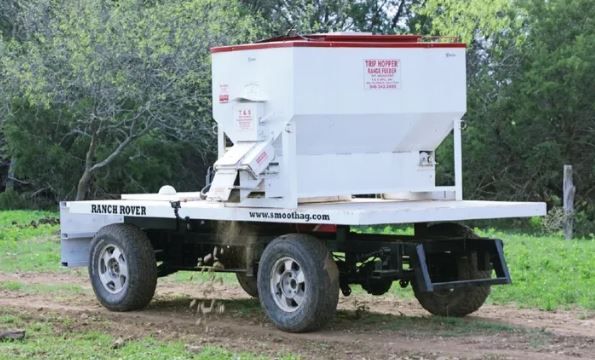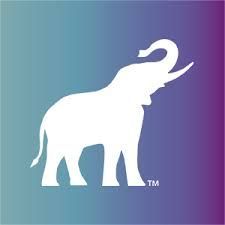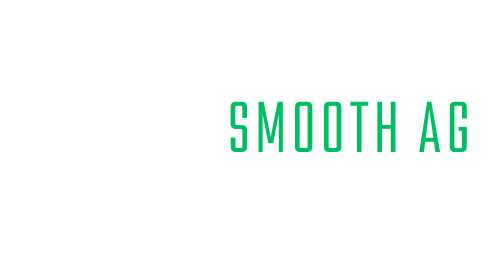Seeing Past What Meets The Eye
Reducing Noise in the Cattle Industry: Filling the Gap with Last Mile Integrations
Introduction
Noise, both literal and metaphorical, is an inherent part of the cattle industry, affecting decision-making processes and efficiency at various stages of production. From farm to table, every choice made along the value chain reverberates through the entire system, influencing animal health, environmental impact, and economic outcomes. This paper delves into the often-overlooked challenge of noise in judgment and decision-making within the cattle industry and proposes a paradigm shift enabled by "last mile integrations" – a comprehensive approach involving technology, data collection, and analysis. By bridging the gap between data availability and decision-making, last mile integrations offer the potential to refine standardized practices across the industry, while accounting for the dynamic nature of variables like location, environment, vegetation demographics, and operation type.
The Noise Conundrum: Unveiling the Challenge
At its core, the cattle industry thrives on countless decisions made daily, from selecting the optimal feed mix for a particular herd to determining the precise timing for animal rotation. These choices are often influenced by a multitude of factors, ranging from scientific knowledge and historical data to personal experience and intuition. However, this amalgamation of influences can lead to inconsistency and inefficiency, creating noise that obscures the path toward best practices.
The scope of this noise encompasses the entire supply chain, starting from on-farm decisions that shape an animal's life and culminating in the consumer's experience. As an illustration, consider the process of selecting the most suitable diet for a herd. Nutritional requirements can vary significantly depending on factors like age, breed, climate, and the specific goals of the operation. A decision made here sets off a chain reaction that impacts growth rates, meat quality, and even the carbon footprint of the entire operation.
While the consequences of this noise are clear, the challenge lies in identifying and quantifying it. Currently, the industry lacks a unified approach to consistently gather, analyze, and interpret the data that drives decision-making. The information that does exist is often siloed within individual operations or proprietary systems, hindering the development of holistic insights.
Closing the Gap: The Role of Last Mile Integrations
The concept of "last mile integrations" emerges as a promising solution to the noise conundrum. This term encapsulates a suite of technologies and methodologies designed to collect, centralize, and analyze data at every crucial juncture of cattle production. These integrations not only provide a means of automating data collection but also serve as valuable tools that enhance the overall efficiency and productivity of operations.
Picture a scenario where an autonomous feed rover navigates through a pasture, distributing feed while simultaneously collecting real-time data on animal behavior, consumption patterns, and environmental conditions. This exemplifies a last mile integration in action – solving a practical labor issue while simultaneously filling a critical gap in data acquisition. Such integrations are not confined to hardware solutions; software interfaces that consolidate information from various sources and APIs further enrich the data pool.
By democratizing data collection and establishing a standardized framework, last mile integrations enable a comprehensive understanding of noise across diverse cattle production demographics. These integrations facilitate the collation of data from various sources, including environmental sensors, wearable devices on cattle, satellite imagery, and existing herd management software. This diverse dataset acts as a lens, allowing us to identify patterns, correlations, and trends that might otherwise be drowned out by noise.
Empowering Informed Decisions: From Data to Actionable Insights
The true power of last mile integrations lies in their capacity to convert raw data into actionable insights. As the industry gains access to previously unattainable information, decision-makers can transition from gut-based judgments to evidence-based strategies. For instance, armed with data-driven knowledge of how specific breeds respond to certain environmental conditions or feed compositions, producers can tailor their practices for optimal results.
The aggregation of data also empowers the industry to anticipate and mitigate risks. By tracking the health and performance of cattle across diverse locations and operation types, patterns emerge that reveal potential disease outbreaks, supply chain disruptions, or inefficiencies. This proactive approach not only enhances animal welfare but also has wider implications for food security and sustainability.
Standardization in a Dynamic Landscape: The Path Forward
Standardization in the cattle industry is not about imposing a rigid one-size-fits-all approach. Instead, it involves distilling flexible guidelines that reflect the inherent dynamism of the industry. Last mile integrations are the conduit through which these guidelines can be crafted.
Consider the impact of climate variations on cattle behavior and health. A standardized guideline might recommend different approaches to managing heat stress in cattle based on location-specific data. Areas with high humidity might necessitate different interventions compared to regions with arid climates. By factoring in these nuances, standardization becomes a dynamic and contextually relevant tool.
Expanding Data Horizons: Integrating Valuable Data Examples for Noise Reduction in the Cattle Industry
In the evolving landscape of the cattle industry, the challenges of noise in decision-making are being met head-on through innovative approaches like last mile integrations. As we delve deeper into the realm of data-driven solutions, it becomes essential to explore the wealth of valuable data examples that can revolutionize the industry's practices. This essay continues the discourse by seamlessly weaving a myriad of data examples into the narrative, accentuating the transformative potential of last mile integrations across feed management, animal welfare, and environmental considerations.
Feed Management: Pioneering Precision Nutrition
One of the cornerstones of efficient cattle production lies in optimizing feed management strategies. Last mile integrations have unlocked a plethora of data sources that can fine-tune the nutrition process. Imagine feed-related technologies ranging from remote feed management dashboards to real-time feed conversion ratios. These innovations allow producers to monitor feed consumption patterns, track nutritional efficiency, and make informed adjustments to the cattle's diet.
Consider the power of IoT-connected feed additive dispensers that not only regulate supplement distribution but also provide insights into nutrient consumption. Automated feed mixing systems and precision livestock feeding technologies ensure consistency and accuracy, minimizing waste. By integrating GPS-enabled feed delivery routing, producers can strategically manage feed distribution across vast landscapes, reducing transportation costs and environmental impact.
Furthermore, the integration of weather data into feed planning processes enables adaptive strategies that account for climatic variations. By harnessing feed formulation optimization software, producers can tailor diets to suit specific nutritional requirements, breed types, and environmental conditions. These examples showcase the potential of last mile integrations in creating a data-driven, efficient, and sustainable feed management ecosystem.
Advancing Animal Welfare: From Monitoring to Insight
Last mile integrations extend their transformative reach to animal-related technologies that revolutionize livestock management and well-being. Remote animal vital sign monitors, livestock RFID tracking, and automated pregnancy testing mechanisms are among the innovations reshaping the landscape of animal care. These integrations streamline data collection, providing real-time insights into the health and condition of individual animals.
The power of data-driven decision-making becomes evident with technologies like heat detection and estrus monitoring. By analyzing data patterns from various sources, producers can identify optimal breeding times, enhancing reproductive success rates. Livestock facial recognition and hoof health monitoring contribute to early disease detection, reducing the need for invasive interventions. Moreover, remote livestock weighing and body condition scoring enable continuous assessment, ensuring timely interventions to maintain animal welfare.
Last mile integrations also empower livestock stress monitoring and welfare compliance tracking, enhancing accountability throughout the value chain. With GPS-enabled cattle collars and livestock movement heatmaps, the movement and behavior of animals can be visualized, providing insights into grazing patterns, stress triggers, and health indicators. These integrations fundamentally transform animal welfare practices by merging real-time data collection with predictive analytics.
Harmonizing with the Environment: Symbiotic Sustainability
The cattle industry's impact on the environment is a complex consideration that last mile integrations address through pasture and environment-related technologies. Automated pasture rotation systems, solar-powered water sensors, and remote pasture mapping with drones illustrate the industry's commitment to sustainable practices. These technologies optimize land use and resource allocation, minimizing the ecological footprint of cattle operations.
Data-driven pasture management becomes a reality with tools that predict forage growth, monitor soil moisture, and assess pasture health. By integrating IoT-connected water trough sensors, producers ensure efficient water usage, aligning with responsible environmental stewardship. Remote pasture weed detection and real-time forage growth tracking inform decision-makers about invasive species and forage availability, enabling precise intervention strategies.
The integration of soil nutrient sensors, combined with weather data, enables dynamic pasture growth prediction models. These models guide grazing rotation plans, enhancing both cattle nutrition and land preservation. Virtual fencing and boundary monitoring systems offer a non-invasive means of containment, reducing physical infrastructure and its associated environmental impact.
Conclusion: Forging a Data-Driven Future
As the cattle industry traverses the uncharted terrain of data integration, the breadth of possibilities becomes evident. Last mile integrations represent not just a technological shift but a paradigm transformation. By incorporating data from feed management, animal welfare, and environmental considerations, the industry can evolve into a harmonious ecosystem that balances productivity, animal well-being, and sustainability.
The data examples outlined in this essay are not isolated silos but interconnected nodes in the journey toward refining cattle production practices. From optimizing feed efficiency to safeguarding animal welfare and embracing sustainable land use, the potential is boundless. It is through the synergy of these diverse data sources that the noise in decision-making begins to dissipate, paving the way for a standardized yet adaptive industry.
In embracing last mile integrations and harnessing the power of data, the cattle industry embarks on a trajectory of innovation, efficiency, and responsibility. As we collectively navigate this landscape, we have the opportunity to amplify the impact of our choices, ensuring that each decision resonates positively throughout the value chain. In doing so, we pave the way for a future where noise is replaced by informed, evidence-based decision-making, creating a more robust, resilient, and sustainable cattle industry.
By: River McTasney








